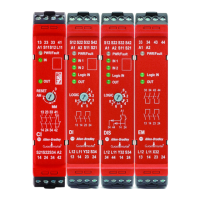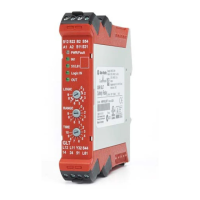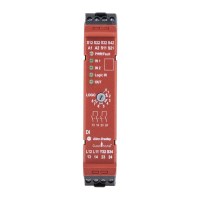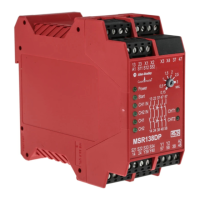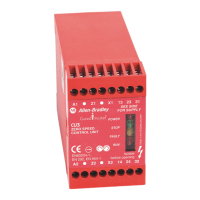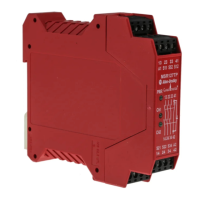450 Rockwell Automation Publication 193-UM015D-EN-P - February 2015
Chapter 11 Troubleshooting
Resetting a Trip
The E300 Electronic Overload Relay trip condition can be reset by taking one of
the following actions:
• Actuating the Blue Trip/Reset button on the E300 Electronic Overload
Relay Communication Module
• Actuating the Reset button on the E300 Electronic Overload Relay
Operator Station
• Setting the Trip Reset bit in the E300 Electronic Overload Relay’s Output
Assembly via the communications network
• Actuating a reset signal to one of the assigned digital inputs
• Setting Overload Reset Mode (Parameter 173) to “Automatic” to allow the
unit to automatically reset after an overload trip
• Setting Trip Reset (Parameter 163) to a value of 1, “Trip Reset”
Trip/Warn LED
Troubleshooting Procedures
ATTENTION: Resetting a trip does not correct the cause for the trip. Take
corrective action before resetting the trip.
An overload trip cannot be reset until the value of Percent Thermal Capacity
Utilized (Parameter 1) is below the value set in Overload Reset Level
(Parameter 174).
Trip Description Possible Cause Corrective Action
Test Trip 1. Operation of the Test/Reset 1. Operate the Test/Reset button to clear
Overload
1. Motor overloaded 1. Check and correct source of overload (load,
mechanical transmission components, motor
bearings).
2. Improper parameter settings 2. Set parameter values to match the motor and
application requirements.
Phase Loss
1. Missing supply phase 1. Check for open line (for example, blown fuse).
2. Poor electrical connection
2. Check all power terminations from the branch
circuit-protecting device down to the motor for
proper tightness. Make sure that the overload
connection to the contactor is secure.
3. Contactor operation 3. Inspect contactor for proper operation.
4. Improper parameter setting
4. Single-phase applications require that Single/
Three Phase (Parameter 176) is set to “single phase”.
Ground Fault
1. Power conductor or motor winding is
shorting to ground
1. Check power conductors and motor windings for
low resistance to ground.
2. Motor winding insulation is decayed
2. Check motor winding insulation for low
resistance to ground.
3. Foreign Object short 3. Check for foreign objects.
4. External ground fault sensor (core balance
current transformer) has improper
connection
4. Check cable connections.

